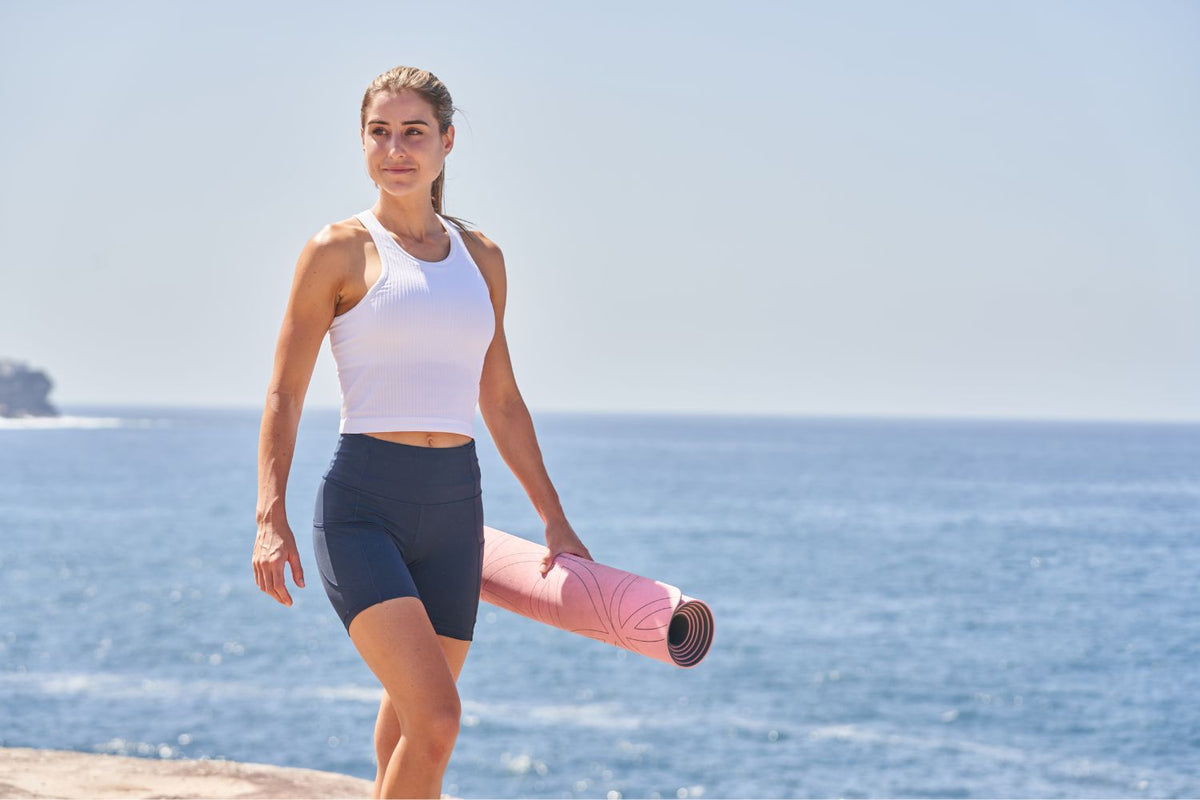Active Recovery: How to Do It Right

With benefits like removing blood lactate, reducing the impact of DOMs, and helping you maintain your exercise routine, it’s no wonder active recovery is highly recommended. But to achieve the best results, you have to do it right. So, from the best low-intensity workouts to recommended gear, here’s how to do just that.
What’s the best time to do active recovery?
In a nutshell, active recovery is a lower-intensity exercise or workout. What active recovery does is it keeps your heart rate up. With boosted circulation, more nutrients and oxygen make it to the muscles and lactate and waste get removed quicker, helping your muscles recover. You can do it at 3 different points:
- During your workout. Research shows that active recovery during High-Intensity Interval Training (HIIT) (i.e., cycling to the point of fatigue and cutting the effort by 50%) helped athletes recover faster than coming to a complete stop for a rest.
- Cooling down after your workout. A study on swimmers found that 10 minutes of lower-intensity exercise helped remove blood lactate faster than passive recovery.
- Doing gentle exercise on a rest day. Although the mechanics are slightly different as you’re doing recovery exercise after a long break, the principles remain similar. Doing a little bit of physical activity on a rest day rather than doing nothing at all will have similar effects to a cool down or interval training rest.
The worst time to do active recovery
Active recovery isn’t for everyone or every occasion. In some cases, passive recovery may be the better option.
For instance, one study suggests that passive recovery is better for high-intensity, short-duration workouts, while active recovery is better for longer, lower-intensity workouts.
Additionally, if you suspect you have overworked a joint or got an acute injury during your workout, avoiding active recovery is best. Check with your clinician as to what the damage is and when it’s safe to resume training.
Best active recovery exercises

Cool down
During a cool-down, it may be best to concentrate on the muscle groups you used during your workout. This could be:
- Walking after a run
- Core and back stretches after an intense ab workout
- Leg stretches after leg day
- Swimming at a leisurely pace after doing fast laps
Ideally, your chosen exercise should slowly lower your heart rate without making you out of breath.
Rest days
On rest days, focus on gentle exercises that get your heart rate up without feeling exertive. Remember, the goal isn’t to push yourself; it’s to let your hard-working muscles get some movement and blood flow. Some good rest day activities to try include:
- Yoga to stretch the muscles and fascia that are prone to seizing up due to post-workout inflammation
- Walking for a safe and easy way to boost circulation following a tough training day
- Swimming to get the blood pumping while reducing muscle inflammation through cool temperatures and gentle pressure
During the workout
If you do HIIT, you can do the same activity at half your maximum capacity. For example, if you cycle, swim, or run, simply slow down after you hit the point of fatigue.
Support your active recovery with compression

Sports Compression Calf Sleeves
You can take the benefits of active recovery a step further with compression.
Compression works similarly - the gentle pressure boosts circulation through the area, minimising swelling, clearing blood lactate, and speeding up oxygen and nutrient delivery to recuperating muscle fibres. Wearing supports like Calf Compression Sleeves during active recovery can essentially increase its benefits.
Wearing them during your workout has the added benefits of reducing the rate of muscle fatigue and minimising muscle damage brought on by oscillation.
You can also try compression for other body parts, depending on what you’re working on and how your body reacts during training sessions. For example, Arm Compression Sleeves or Sports Wrist Straps for weightlifting, Performance Socks for jogging, or Sports Back Support for core training.
More ways to support your recovery
- Eat: when recovering from a workout, your body needs a good amount of carbohydrates, proteins, and nutrients. Carbs restore glycogen levels, building your energy reserves for the next training sessions. Proteins and vitamins are essential for rebuilding muscle tissue and improving strength. Some vitamins and nutrients can also help reduce inflammation and soreness. You don’t have to eat immediately after a workout, but it’s a good idea to have a snack within an hour or so and not restrict your food intake in the next few hours.
- Keep it balanced: too many intense training days in a row (especially those using the same muscle groups) can lead to tissue breakdown. Too many passive rest days in a row can decrease your training volume by as much as 30%. So, work out a schedule with training and recovery days, and stick to it.
- Listen to your body: if you are feeling pain on top of the usual muscle soreness, avoiding active recovery is best. If you feel exhausted after a workout, take a breather for a few minutes and proceed with your cool-down routine.
For passive recovery, you can also get a pair of Recovery Socks to reduce inflammation and boost circulation even as you’re sitting still.
To sum up
Active recovery has a ton of benefits. But to maximise its effects, you need to do it right. Keep it light, work the same muscle groups during your cool-down, support your recovery through compression and nutrition, and do passive recovery when your body needs it.
If you require assistance selecting the right product for your needs or wearing the brace, call us on 1300 668 466 or contact us via live chat.
Do you have private health? Most private health extras will cover Bauerfeind Products. Check to see if yours is included. Bauerfeind Private Health Insurance Inquiry.



